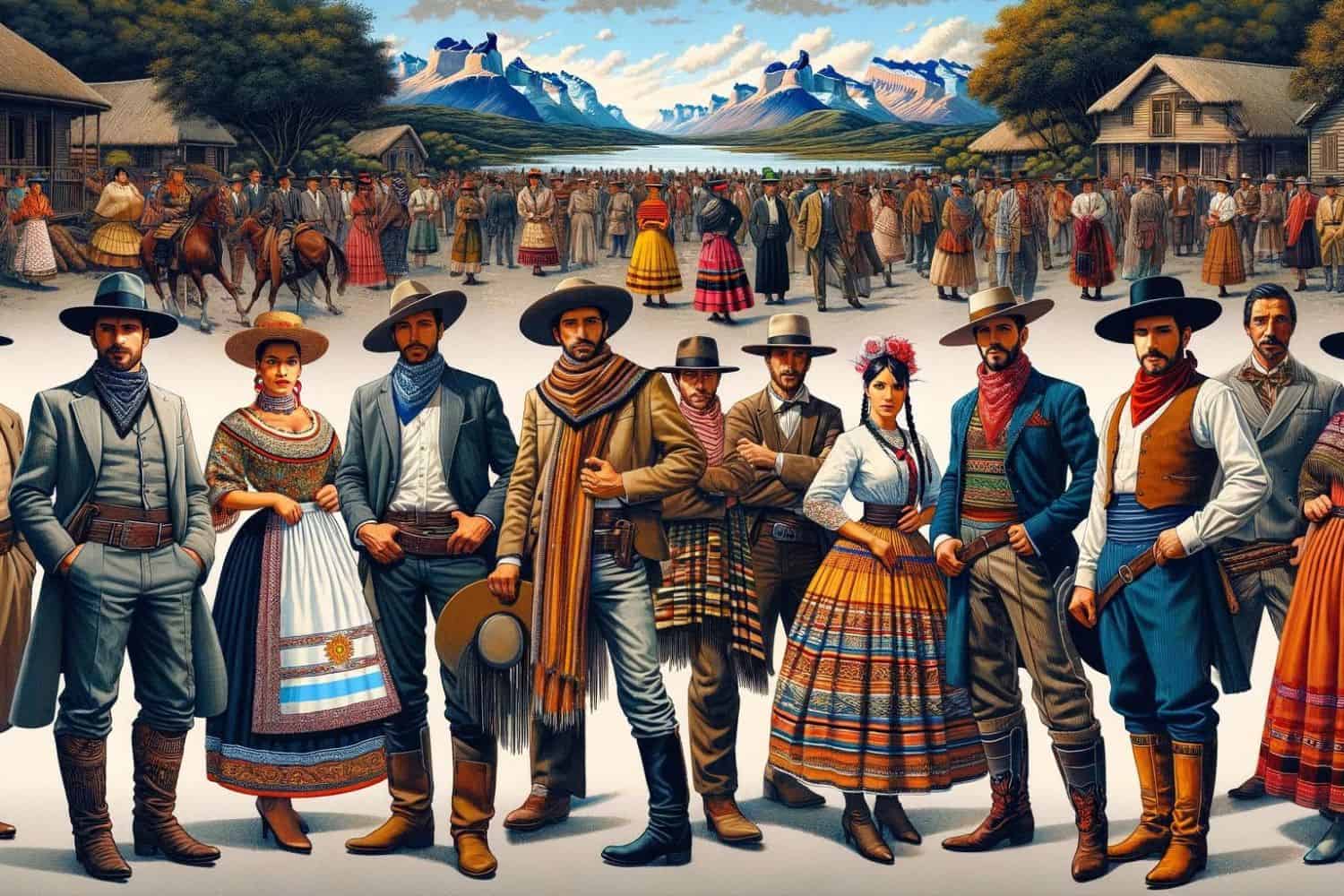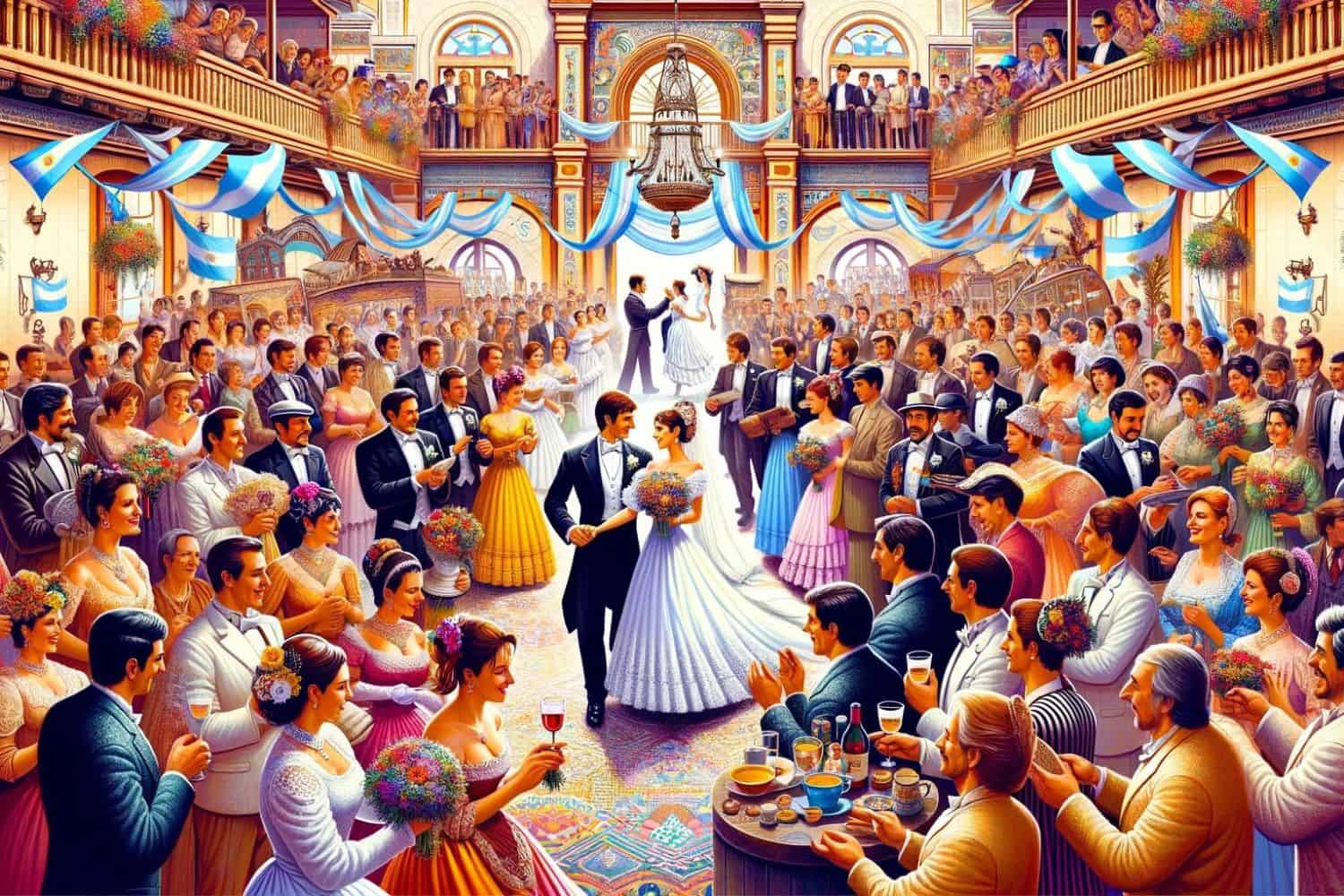Table of Contents
Delve into Argentina culture as we offer you a comprehensive understanding of the customs of Argentina and its rich and vibrant heritage, including traditions, values, and distinctive customs and practices.
Argentinians place a significant emphasis on hospitality, warmly welcoming guests. Family holds a central role in Argentine society, with tight-knit bonds and a strong sense of community. It’s crucial to acknowledge that Argentina culture is in a constant state of development, influenced by historical events, regional dynamics, and global interactions.
Comprehending the culture of Argentina can provide valuable insights into the intricate and diverse society of the country.
Argentina Culture
Here are the most important points to begin learning about Argentina culture and customs:
- Ethnic Diversity: Argentina is home to a diverse mix of ethnic groups, each with its own customs and traditions. Argentines of Spanish, Italian, Indigenous, and other European and South American descent make up the major ethnic communities.
- Languages: The official language in Argentina is Spanish, but numerous regional accents and dialects are spoken throughout the country, influenced by immigration patterns.
- Catholic Influence: Argentina is predominantly a Catholic country, and Catholicism has a significant influence on Argentina culture, affecting daily life, values, and societal norms. This includes religious holidays, traditions, and practices. However, Argentina also has a growing secular and diverse population.
- Greeting Etiquette: Greetings are an essential part of Argentina culture. Handshakes or cheek kisses are common forms of greeting between both men and women.
- Traditional Clothing: Traditional Argentine clothing, like the “gaucho” attire for men and traditional dresses for women, is still worn, particularly in rural areas. However, urban fashion tends to be more modern and Western.
- Cuisine: Argentine cuisine is famous for its beef and barbecue culture. “Asado” (barbecue) is a popular way to prepare and enjoy meat. Empanadas, milanesa, and mate (a traditional herbal drink) are also common Argentine foods.
- Hospitality: Argentines are known for their warm hospitality. When guests visit, they are often offered food, wine, and lively conversations. It is considered polite to accept such offers.
- Respect for Elders: Respect for elders is a deeply ingrained custom. Younger individuals show deference to their seniors through words and actions.
- Arts and Crafts: Argentina has a rich tradition of arts and crafts, including tango dance, fine leatherwork, and traditional folk music.
- Music and Dance: Tango music and dance are iconic to Argentina culture. Other traditional music includes folk genres like zamba and chacarera. Dance is a significant part of social gatherings and celebrations.
- Celebration of Festivals: Argentines celebrate various religious and cultural festivals, such as Christmas, Carnival, and Independence Day. These celebrations often involve music, dancing, and gatherings with family and friends.
- Family and Community: Family is central to Argentine society, and strong community bonds are essential for support and social cohesion.
- Gender Roles: Gender roles have evolved over time, with men and women increasingly sharing social spheres and responsibilities. However, some traditional gender roles still exist, especially in more conservative areas.
- Marriage and Relationships: Arranged marriages are not common in Argentina. Couples typically choose their partners, and marriage is viewed as a commitment between individuals.
- Cultural Influences: Argentina culture has been influenced by immigration, with Italian and Spanish traditions being particularly prominent. Indigenous influences also play a role in the country’s culture.
These customs are essential aspects of Argentina culture and are readily visible in everyday life, reflecting the country’s rich cultural heritage and sense of tradition.
Argentina Traditional Attire
Argentina traditional attire is a reflection of the country’s diverse cultural heritage, regional variations, and historical influences. The clothing worn by Argentines not only serves functional purposes but also carries significant cultural and social meanings.

1. Regional Variation: Argentina’s traditional clothing varies from region to region, influenced by the local climate, lifestyle, and ethnic traditions. In the cooler southern and mountainous areas, people tend to wear heavier and more layered garments, while in the warmer northern regions, lighter clothing is preferred.
2. Gaucho Dress: The traditional attire of the gauchos, one of Argentina’s iconic figures, includes the “bombacha” pants and a loose-fitting shirt, often accompanied by a wide-brimmed hat and leather boots. Women may also wear similar clothing with their unique styles and accessories.
3. Indigenous Peoples’ Attire: Indigenous groups in Argentina, such as the Mapuche and Quechua, have their distinctive traditional clothing. For example, Mapuche women may wear colorful skirts and ponchos with intricate patterns, while Quechua men often sport ponchos and woven hats.
4. Patagonian and Andean Clothing: In the Patagonian and Andean regions, people have adapted their attire to the harsh climates. You can find individuals wearing warm, woolen garments, including ponchos, blankets, and knitted hats, to withstand the cold temperatures.
5. Modesty and Cultural Significance: Traditional Argentine clothing also emphasizes modesty, with garments designed to cover the body. The choice of colors, fabrics, and embroidery often carries cultural and regional significance, and attire may also indicate one’s social or marital status.
6. Special Occasion Attire: Argentines dress elaborately for special occasions and celebrations, with vibrant and ornate clothing adorned with intricate beadwork, embroidery, and jewelry. Festivals, holidays, and traditional events provide opportunities for individuals to showcase their finest traditional attire.
7. Adaptation to Modernity: While traditional attire remains important, urbanization and modern influences have led to the integration of Western clothing in daily life, especially in cities like Buenos Aires. Many Argentines wear a combination of traditional and contemporary clothing, reflecting changing lifestyles and global fashion trends.
Argentina’s traditional attire is not just a matter of clothing; it is a vibrant expression of the country’s cultural diversity, history, and identity. It serves as a visual testament to the rich tapestry of traditions that have shaped Argentine society for centuries.
Argentina Marriage Traditions
Argentina marriage traditions are deeply rooted in its diverse cultural and regional heritage, with variations across different provinces and communities. These traditions play a significant role in Argentine society, reflecting both historical practices and contemporary influences.

1. Arranged Marriages: Arranged marriages are not as common in Argentina as in some other countries. However, some families still play a role in introducing potential partners to their children. Arranged marriages are seen as a way to maintain cultural and social ties and ensure compatibility between families.
2. Matchmakers: Matchmakers, known as “casamenteros” or “celestinas,” assist in finding suitable matches for individuals. They consider factors such as family background, social status, and compatibility when suggesting potential partners.
3. Engagement: Once a suitable match is found, the engagement process begins with a formal agreement between the families. This agreement, often called an “compromiso” or “acuerdo de compromiso,” marks the commitment of the couple to marry.
4. Wedding Celebrations: Argentine weddings are festive occasions that often last for an entire day. They typically involve traditional customs, feasting, music, and dancing. The main wedding ceremony involves the exchange of vows and rings and is typically held in a church or at a wedding venue.
5. Bridal Dowry: In Argentina, it is not customary for the groom to provide a dowry to the bride. Instead, both families may contribute to the wedding expenses and gifts for the couple.
6. Bridal Attire: Brides in Argentina typically wear elegant white dresses for their weddings, often accompanied by beautiful accessories and veils. Groom attire varies but commonly includes a formal suit.
7. Post-Wedding Customs: After the wedding, various traditions may continue, such as a reception or a “fiesta” hosted by the newlyweds. Some couples also participate in a “corte de la torta” ceremony, where they cut a wedding cake.
8. Social and Religious Significance: Marriage is both a social and religious commitment in Argentina, often with ties to Catholic customs and traditions. The wedding ceremony involves recitation of vows and blessings from the priest.
9. Family and Community Involvement: Argentine weddings are typically celebrated with extended families and friends, making them a community event. Family and friends play essential roles in supporting and participating in the festivities.
10. Contemporary Changes: In modern Argentina, there is a trend toward couples choosing their partners based on personal preferences and love. While some traditional customs are still observed, couples have more freedom in making their own decisions regarding marriage.
Argentina marriage traditions reflect the importance of family, community, and cultural diversity in Argentine society. While some practices may have evolved over time, they continue to be a significant aspect of Argentine life, preserving the country’s rich cultural heritage and social bonds.
Argentina Food Culture
Argentina food culture is a captivating and diverse reflection of its history, geography, and the fusion of culinary traditions from Europe, South America, and indigenous influences.

- Regional Variation: Food from Argentina exhibits a wide range of regional cuisines due to the country’s diverse geography, which includes fertile plains, mountainous regions, and coastal areas. Each region incorporates unique local ingredients and cooking techniques, resulting in a rich tapestry of flavors that characterizes Argentine cuisine.
- Staple Foods: Argentinian cuisine relies heavily on staple foods like beef, wheat, maize, and potatoes. Beef dishes like “asado” (barbecue) and “empanadas” (stuffed pastries) are particularly popular.
- Grilled Meats: Grilled meats, especially beef, are an iconic aspect of Argentinian cuisine. The famous Argentine beef is often seasoned with chimichurri sauce and cooked to perfection on open flames.
- Flavorful Spices and Herbs: Argentinian cuisine incorporates a variety of spices and herbs such as paprika, oregano, and parsley, which add depth and complexity to dishes.
- Traditional Dishes: Argentinian cuisine features traditional dishes like “milanesa” (breaded and fried meat cutlets), “locro” (a hearty corn and meat stew), “humita” (steamed corn cakes), and “choripán” (grilled sausage sandwich). These dishes may have regional variations.
- Use of Dairy: Dairy products like cheese and “crema” (cream) are common ingredients in Argentinian cuisine and are used in dishes like “provoleta” (melted provolone cheese) and “pastelitos” (sweet pastries).
- Baking and Pastries: Baking plays a significant role in Argentinian cuisine, with “facturas” (sweet pastries), “empanadas” (stuffed pastries), and “pan casero” (homemade bread) being beloved by Argentinians.
- Sweets and Desserts: Argentinian sweets often feature ingredients like dulce de leche (caramelized milk), chocolate, and fruits. “Dulce de leche alfajores” and “torta” (cake) are popular dessert choices.
- Mate Culture: Argentinians have a strong mate culture, with “mate” being a popular herbal tea infusion. It is often shared among friends and family in a traditional gourd and sipped through a metal straw, fostering social connections.
- Family and Community Dining: Argentina culture places a significant emphasis on communal dining. Families and friends frequently gather around a “mesa” (table) to share meals together, particularly during Sunday asados.
- Influence of Argentinian Diaspora: Argentinian cuisine has gained recognition and popularity in various parts of the world due to the Argentinian diaspora. Argentinian steakhouses in international cities offer a taste of Argentina culture to diverse audiences.
- Resilience and Adaptability: Argentinian cuisine has endured and adapted over the years, demonstrating the resourcefulness of Argentinian cooks in creating delectable dishes even in challenging circumstances.
Book Your Trip to Argentina Today!
Embark on an unforgettable journey and explore the allure of Argentina through our exclusive tours.
More About Argentina
[the-post-grid id=”50336″ title=”Argentina Main page”]
